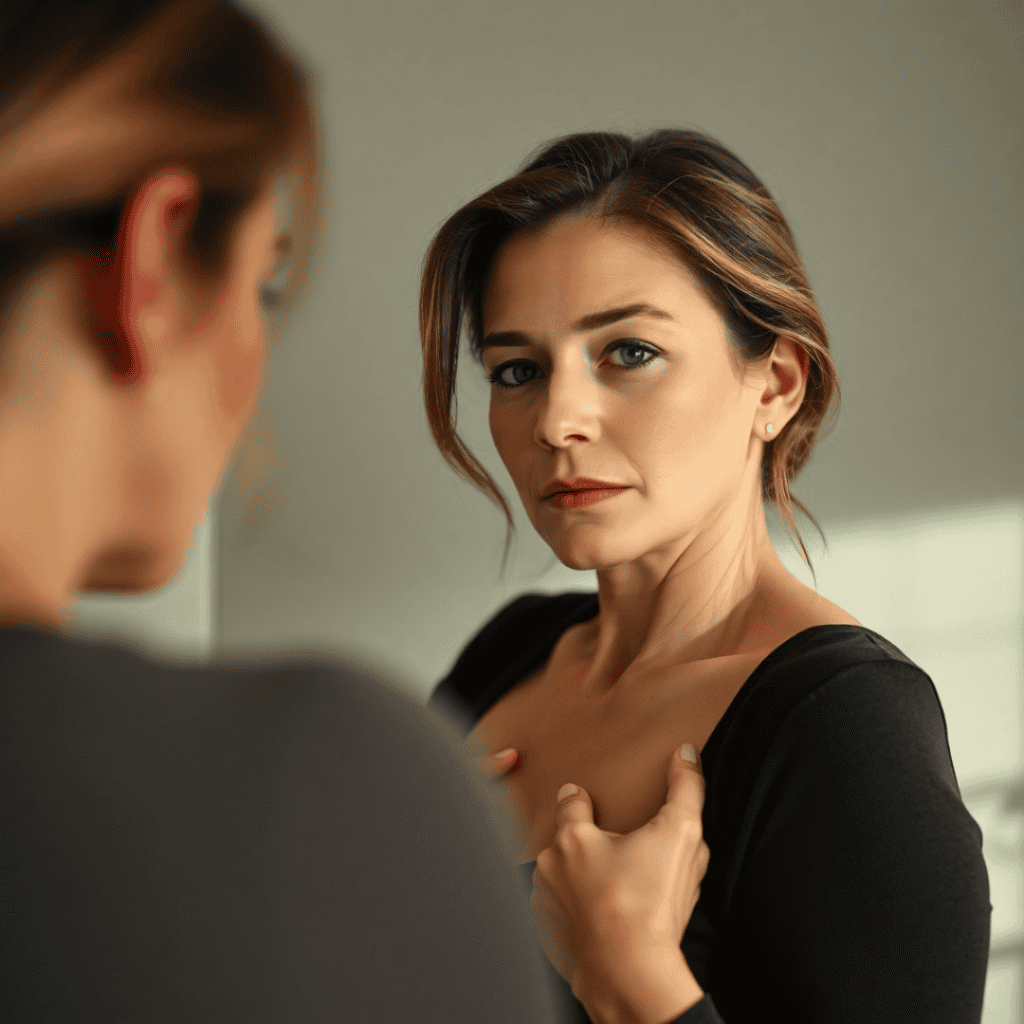
Breast cancer is one of the most common cancers among women, and early detection is one of the best ways to improve survival rates. While mammograms and clinical breast exams are crucial, there’s something you can do at home to stay informed about your breast health—a breast self exam.
Yet, many people either don’t know how to do one or avoid it out of fear. What if I feel something strange? What if I do it wrong? These worries are completely normal, but ignoring self-exams can mean missing early warning signs that could save your life.
The truth is, a breast self exam is simple, quick, and empowering. It helps you get familiar with what’s normal for your body so you can notice any changes early. Let’s break it down step by step.
What Is a Breast Self Exam and Why Should You Do It?
A breast self exam is a simple at-home method for checking your breasts for any unusual lumps, changes in shape, or skin abnormalities. It’s not a replacement for a mammogram or a professional exam, but it helps you:
- Detect lumps or changes early, when treatment is most effective.
- Understand your body and recognize what’s normal for you.
- Feel more in control of your health by taking an active role in monitoring for changes.

According to the National Breast Cancer Foundation, many women discover lumps themselves before a doctor diagnoses them. That’s why knowing how to check for breast cancer at home is so important—it could lead to early detection and better treatment options.
Best Way to Do a Breast Self Exam: Step-by-Step Guide
Performing a breast self exam is easy and only takes a few minutes. The best way to check is in three different positions: in the shower, in front of a mirror, and lying down.
1. In the Shower
- Use the pads of your fingers to press firmly but gently in small circular motions.
- Start from the outer part of your breast and move toward the nipple, covering the entire area.
- Check for any unusual lumps, thickened areas, or tenderness.
- Don’t forget to check the underarm area, as breast tissue extends there.

2. In Front of a Mirror
- Stand with your arms at your sides and look for any changes in size, shape, or skin appearance (like dimpling, swelling, or redness).
- Raise your arms overhead and check for symmetry and skin changes.
- Place your hands on your hips, press firmly to flex your chest muscles, and look for any changes in shape or contour.
3. Lying Down
- Lie flat on your back and place one arm behind your head.
- Use your opposite hand to examine the breast in circular motions.
- Apply light, medium, and firm pressure to feel different layers of tissue.
- Repeat on the other side.
How Often Should You Check for Breast Cancer?
Experts recommend performing a breast self exam once a month to stay consistent.
- For premenopausal women: The best time to check is a few days after your period ends, when breasts are least swollen.
- For postmenopausal women: Choose a consistent day each month, like the first or last day.
- If you have breast implants: Self-exams are still important—get familiar with how they feel and check for any unusual changes.
What Does a Lump Feel Like in a Breast Self Exam?
Breasts naturally have some lumpiness, so it’s important to know what to look for. A concerning lump may feel:
- Hard, irregularly shaped, and doesn’t move easily.
- Different from surrounding tissue or more firm than usual.
- Located in the breast or underarm area and doesn’t go away after your menstrual cycle.
Not all lumps are cancerous. Many are harmless cysts or fibrous tissue, but it’s always best to have anything unusual checked by a doctor.

What to Do If You Find Something Unusual
Discovering a lump or change can be scary, but don’t panic. Here’s what to do next:
- Recheck in a few weeks – Hormonal changes can cause temporary lumps, so wait until after your next period.
- Contact your doctor if the lump persists, grows, or feels different from the surrounding tissue.
- Get a clinical breast exam or imaging tests like a mammogram or ultrasound if recommended.

How a Breast Self Exam Fits into Breast Cancer Screening
A breast self exam is just one part of early breast cancer detection. It should be combined with:
- Clinical Breast Exams (CBEs) – Performed by a healthcare professional during a routine check-up.
- Mammograms – X-ray imaging to detect tumors before they can be felt.
- Ultrasounds or MRIs – Used for women with dense breast tissue or higher risk factors.
A self-exam is your first line of defense—helping you recognize changes between doctor visits.
Overcoming Fear and Anxiety About Self-Exams
Many people avoid self-exams because they’re afraid of what they might find. But checking yourself doesn’t cause cancer, and it won’t change the outcome—only awareness and action can.
If you feel anxious, try shifting your mindset:
- Self-exams are a form of self-care, not fear. They help you stay informed and in control.
- Most lumps are not cancerous. Many turn out to be benign cysts or tissue changes.
- Early detection leads to better outcomes. The sooner something is found, the more treatment options are available.
If you’re struggling with anxiety about checking, try pairing it with something positive—do your self-exam while listening to music or after a relaxing bath.
Take Charge of Your Health Today
A breast self exam is one of the easiest, most empowering habits you can develop. It’s quick, free, and could make all the difference in catching early signs of breast cancer.
- Pick a day this month to do your self-exam.
- Make it a monthly habit.
- Encourage a friend or loved one to do the same.
Your health is in your hands—literally. Take control today, because knowing your body could save your life.
